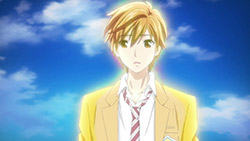 |
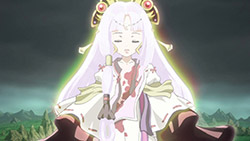 |
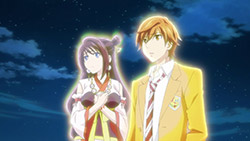 |
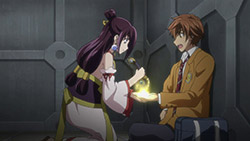 |
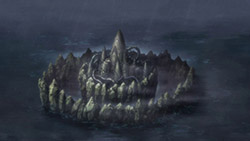 |
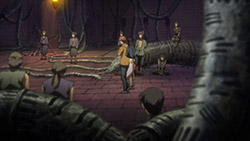 |
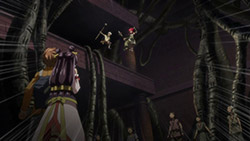 |
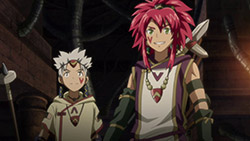 |
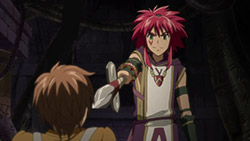 |
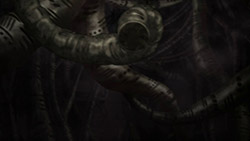 |
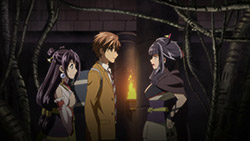 |
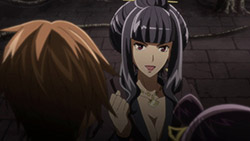 |
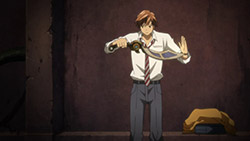 |
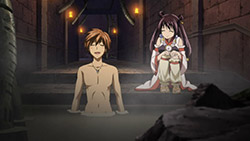 |
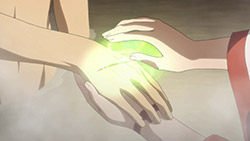 |
 |
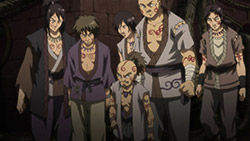 |
 |
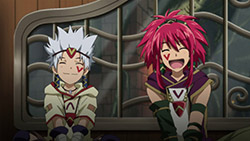 |
 |
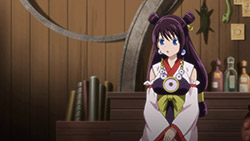 |
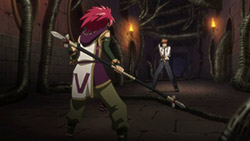 |
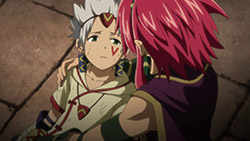 |
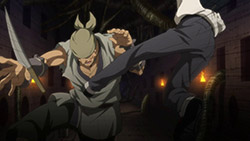 |
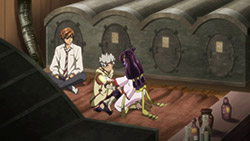 |
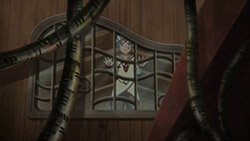 |
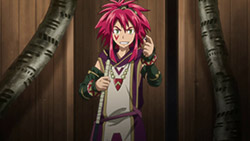 |
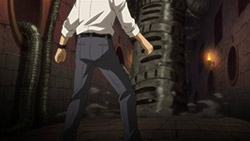 |
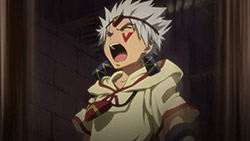 |
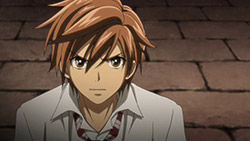 |
「審判」 (Rekkoningu)
“The Reckoning”
Arata Kangatari is certainly showing no signs of panic, considering the realities of the calendar.
While things are zipping along nicely, I’m still quite unsure where Satelight is headed with this adaptation. They continue to adapt the manga at a pace of a little more than three chapters per episode – brisk, certainly, but not insanely so. And so far there haven’t been any huge, game-changing rewrites that tip off where the series is headed. My suspicion when this started was that we were headed for a repeat of Zetman, a long-running manga crammed into one cour with an original final act, but that was already obvious by this point in that adaptation – not so here. I suppose it’s possible the plan is simply to adapt the first 40-50 chapters and stop, leaving an open invitation to buy the manga, but if I were betting I’d still put my money on an anime-original ending of some sort.
Arata still isn’t shaking the Earth or anything, but story-wise it’s doing a solid job of conveying exactly what this series is – a straightforward, entertaining shounen fantasy with lots of action and a splash of shoujo style. My biggest regret is that Satelight hasn’t given us a richer, more fluid visual experience in the mold of Mouretsu Pirates to do justice to the look of Watase Yuu’s manga – the art is colorful and the character designs have grown on me, but the animation and background detail are, in a word, ordinary. I have no major complaints apart from that – I enjoy the BGM, the casting is fine and the narrative structure (as you’d expect from a rock-solid director like Yasuda-sensei) is excellent.
Several new faces appeared this week, as Hinohara and Konoha arrived at the "Hell on Earth" prison of Gotoya Island, but the most important of them is Kanate (Minagawa Junko). He’s one of the first people they meet upon arrival, when it becomes clear that someone has started a rumor that anyone who brings the head of the "Princess Killer" to the warden will be freed. Gotoya isn’t a traditional prison with cells, but rather a sort of lawless wasteland, where everyone is left to fend for themselves – and Kanata is also fending for his adopted otouto, Ginchi, after both of them were sent to Gotoya for thievery. Kanata is about to take a stab at grabbing the head in question when "The Reckoning" begins – a daily ritual where two prisoners are sucked into giant tubes where, presumably, they meet their end.
Kanata is an important character, and he strikes the right notes in his first appearance, largely thanks to the casting of Minagawa-san – who’s about as good as any female seiyuu at portraying boys. There are those who feel the Kanate-Ginchi thread is the most emotionally involving in the manga, and I’m pleased that by first appearances, it appears that it’s not going to be shafted by the adaptation. It isn’t hard to see that Hinohara and Kanata were always going to end up allies in a place where real friends are few and far between, despite their rough start – in addition to a pass at taking Hinohara’s head Kanate ends up claiming Konoha after he rescues her when she takes a tumble (not that he has any clue what to do with her). Hinohara also finds another seemingly friendly face in Osome, the female prisoner who feeds him what little information he has about Gotoya.
What we didn’t see in this episode was Arata, or any sign of modern-day Tokyo. For those interested that’s not a shift – they didn’t get any play at this point in the manga either. There’s an awful lot happening in Amawakuni at the moment what with Hinohara and Konoha arriving in Gotoya, not to mention that he’s just been asked by the dying Princess Kikuri to find her before she dies, and to rule the land in her place. Hinohara’s arc at this point looks very much like a standard shounen hero’s – the reluctant boy full of self-doubt forced to shoulder the responsibility for many others and to grow up. Well, Watase-sensei is working her first shounen series here, so I suppose it’s natural she’d take her cues from established precedent – but as the story progresses, both Hinohara and Arata Kangatari reveal more of their actual bloodline. I only hope the anime is able to portray that with as much accuracy as they’ve portrayed the direct approach of the first chapters.
Preview
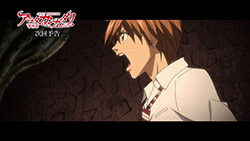 |
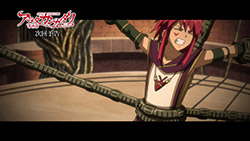 |
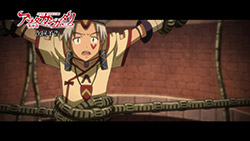 |

I want to see how the “other” Arata is doing right now. It does seem he may be the better off of the two.
After watching 3 episodes of this show, it is unfortunate that Arata (the one in the mystical world) is probably one of the most incompetent main characters ever seen. It seems as though the complexity of the character isn’t as great as the compared to some of the other protagonists in other animes this season.
This is particularly shown through him retreating in fear when he is attacked by the red-haired guy. Arata has a hayagami (or whatever it is called), and that is an adequate weapon to defend himself and the girl who followed him. Even if he can’t use the sword’s powers, the least he could do is to draw his sword and defend himself. Instead, we see a main character dropping to his knees, saved only by the Warden activating his tube-like mechanism.
However, seeing that he is resolved to save the two boys at the end of the episode, I really do hope that he does not revert to the miserable state that he was.
Show Spoiler ▼
This is where some of the detail in Arata’s torture at the hands of his tormentors in middle school – which is in the manga – would have helped the anime audience understand just how beaten-down the character really is. But for the record I never thought he would have let Kanate actually do him serious physical harm – he was just shocked and reluctant to draw his sword against a kid, but his self-preservation impulse works just fine.
I will say this much – you can see a transition starting to happen already, by the end of the episode. It’s a shounen, after all.
I agree that they should have shown a bit more of Arata’s(the one from Japan) past. But if his past is what you make of it – that it is analogous to inhuman and degrading treatment, then it would explain his past.
Personally, I think it would be more interesting if he acts more like the protagonist in Valvrave though.
“… it would explain his *[Conduct throughout the episode]*”
“elf-doubt”? Don’t we have it all…
If I was thrown into a world like that, and had a guy attack me with a spear, I’m pretty sure I’d have reacted in the same way.
And the only combat experience I have is fencing, that’s not going to help me against a spear-figher of red-kid’s ability.
He’s able to twirl his staff, AND kick at the same time fluidly. I fire spin staff, so I know that’s a pretty tall order.
Indeed, a lot of the complaints against Hinohara are the same ones levied against the MC in Deadman Wonderland, except that’s a seinen and much more graphic and disturbing. This is really the prologue to Arata, though – at least in theory it becomes something quite different as the hero quest takes center stage, but how much of that we’ll see is really anyone’s guess.
After starting to watch this anime I decided to read through the manga. After reading through 164 chapters of it, I can see that not only was this show going more in the direction of Fushigi Yugi than I thought, but its also crossed with some “Inuyasha” elements in that it begins to be a standard quest plotline anime.
However with the short amount of episodes we have involved here, how the heck are they expecting to adapt a 200+ chapter manga?
Show Spoiler ▼
I know right?! How can they forgot about “him”?! He is one of the KEY factor that change Hinohara’s chara.
Thanks for your post.
Show dropped.
I do agree with the fact that the background gfx nd visuals are kind of giving me the feeling that I’m watching an older anime, it greately reminds me of ‘Escaflowne’ art, more like a modern version of the old Escaflowne.
Anyho, I’m liking the story so far, and I’m really intersted in knowing how the other Arata is doing in Japan. Can’t wait for next week’s ep, thanks for your review, M.